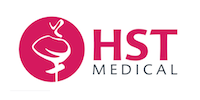A diabetes dietsimply means eating the healthiest foods in moderate amounts and sticking to regular mealtimes, with foods that are naturally rich in nutrients, low in fats and calories. Key elements are fruits, vegetables and whole grains. A good diabetes diet may also be a good eating plan for anyone.
- Healthy carbohydrates. During digestion, sugars (simple carbohydrates) and starches (complex carbohydrates) break down into blood glucose. Focus on the healthiest carbohydrates, such as fruits, vegetables, whole grains, legumes (beans, peas and lentils) and low-fat dairy products.
- Fiber-rich foods. Dietary fiber includes all parts of plant foods that your body cannot digest or absorb. Fiber moderates your digestion and helps control blood sugar levels. Foods high in fiber include vegetables, fruits, nuts, legumes (beans, peas and lentils), whole-wheat flour and wheat bran.
- Heart-healthy fish. Eat fish at least twice a week. Fish can be a good alternative to high-fat meats. For example, cod, tuna and halibut have less total fat, saturated fat and cholesterol than do meat and poultry. Fish such as salmon, mackerel, tuna, sardines and bluefish are rich in omega-3 fatty acids, which promote heart health by lowering blood fats called triglycerides. Avoid fried fish and fish with high levels of mercury, such as swordfish and king mackerel.
- “Good” fats. Foods containing monounsaturated and polyunsaturated fats can help lower your cholesterol levels. These include avocados, almonds, pecans, walnuts, olives, and canola, olive and peanut oils. But don’t overdo it, as all fats are high in calories.
How can my pharmacist help me if I am diabetic and on medication?
A pharmacist can play an important role in your journey to good health. Feel free to drop by and talk to your pharmacist if you are diabetic and are on medication and/or insulin. A pharmacist can help you to understand how your medication works, how to take it, and what are the effects of the medication.
A pharmacist can also assist you in self monitoring of blood glucose. It is an important part of the treatment process. Self monitoring helps your healthcare professionals (physicians, pharmacists and nurses) to know your blood glucose profile better, and this information helps them to plan for your treatment.
It also empowers you and your family to make treatment choices in diet and physical activity, improves your recognition of signs of high or low blood sugar and your understanding of the drugs and medication involved in your treatment.
(Copyright® HST Medical Pte Ltd)
